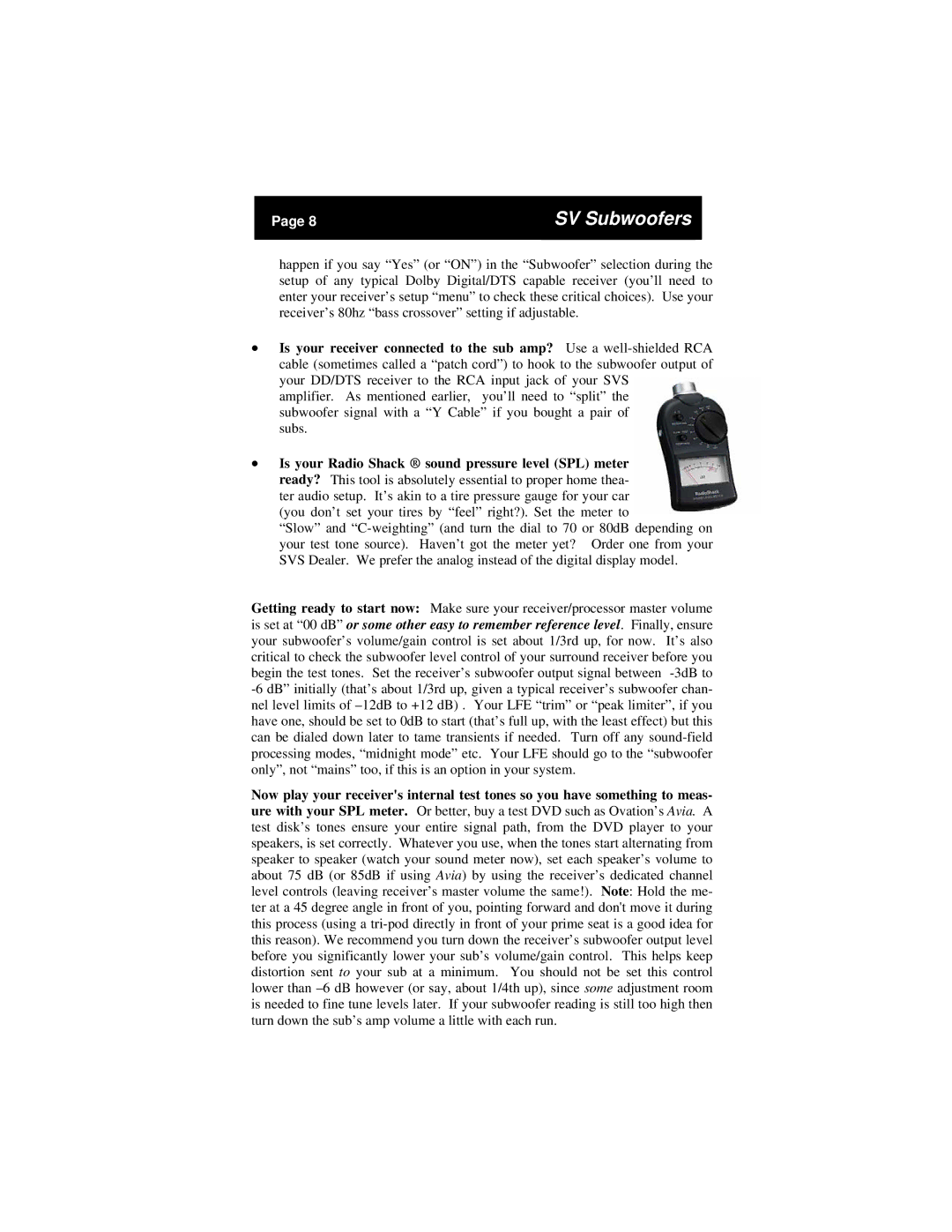
Page 8 | SV Subwoofers |
|
|
happen if you say “Yes” (or “ON”) in the “Subwoofer” selection during the setup of any typical Dolby Digital/DTS capable receiver (you’ll need to enter your receiver’s setup “menu” to check these critical choices). Use your receiver’s 80hz “bass crossover” setting if adjustable.
•Is your receiver connected to the sub amp? Use a
amplifier. As mentioned earlier, you’ll need to “split” the subwoofer signal with a “Y Cable” if you bought a pair of subs.
•Is your Radio Shack ® sound pressure level (SPL) meter ready? This tool is absolutely essential to proper home thea- ter audio setup. It’s akin to a tire pressure gauge for your car (you don’t set your tires by “feel” right?). Set the meter to
“Slow” and
Getting ready to start now: Make sure your receiver/processor master volume is set at “00 dB” or some other easy to remember reference level. Finally, ensure your subwoofer’s volume/gain control is set about 1/3rd up, for now. It’s also critical to check the subwoofer level control of your surround receiver before you begin the test tones. Set the receiver’s subwoofer output signal between
Now play your receiver's internal test tones so you have something to meas- ure with your SPL meter. Or better, buy a test DVD such as Ovation’s Avia. A test disk’s tones ensure your entire signal path, from the DVD player to your speakers, is set correctly. Whatever you use, when the tones start alternating from speaker to speaker (watch your sound meter now), set each speaker’s volume to about 75 dB (or 85dB if using Avia) by using the receiver’s dedicated channel level controls (leaving receiver’s master volume the same!). Note: Hold the me- ter at a 45 degree angle in front of you, pointing forward and don't move it during this process (using a
